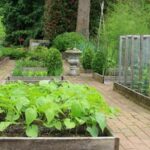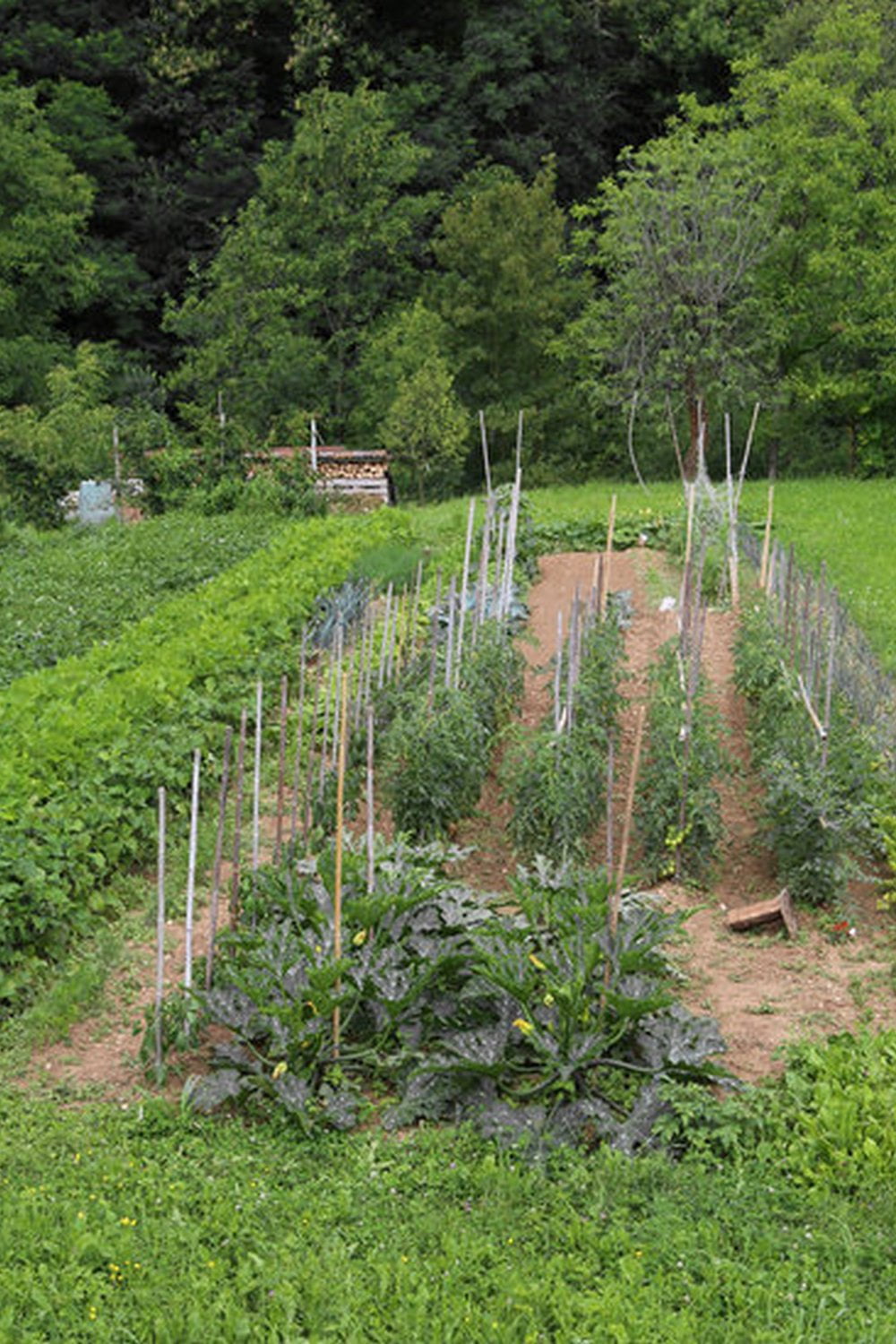Introduction
Harvesting tomatoes from an indoor vegetable garden is a rewarding and enjoyable experience that can provide a number of benefits for any home gardener. Not only is it an efficient way to produce food at home regardless of the season, but it can also be great fun and an opportunity to increase knowledge about gardening and maintaining plants. Here are some of the main reasons why harvesting tomatoes from an indoor vegetable garden is something that everyone should consider trying.
First of all, having fresh tomatoes available in your kitchen all year round allows you to enjoy their full nutritional benefits as soon as you harvest them. They contain fiber, vitamins A, C, E and K, as well as minerals such as magnesium and potassium. Furthermore, being able to monitor your vegetables’ growth indoor will enable you to recognize any problems early on before they worsen. Growing your own tomatoes inside will also give you complete control over how they are grown; it’s up to you if they’re going to be organically produced or not.
Finally, many people find the process of growing their own produce inside highly satisfying because it requires creativity and skill. Knowing that you were able to produce test-tasting juicy tomatoes with just soil and water encourages one’s sense of accomplishment while providing valuable knowledge that can help in future gardening projects as well. All in all, harvesting tomatoes from an indoor vegetable garden is a fun activity that provides numerous health benefits and skills taught through hands-on experience – making it a task worth trying for any home gardener!
Preparing Your Home or Apartment for an Indoor Vegetable Garden
When you are ready to enjoy a regular supply of fresh and healthy vegetables from your own home, it is important to take the necessary steps to prepare your space for an indoor vegetable garden. First, measure the area that is available for the garden, so that you can determine what kind of containers you will need. Make sure the containers chosen provide adequate space for mature plants and the amount of soil needed to sustain them. It will also be important to ensure that there is adequate lighting in place, as many types of vegetables require at least six hours of direct light per day. If natural light sources are not available, supplemental lighting may be necessary.
Next, research which types of vegetables will grow best indoors. Although tomatoes are a popular choice for indoor gardens, there are other great options like lettuce and radishes that don’t require as much light or space. You should also create a plan for watering and fertilizing to ensure your plants get enough nutrition and water throughout their growth cycle while avoiding over-watering. Finally, make sure to find ways to control temperature levels in your space as many types of vegetables prefer a consistent temperature range between 65-75 degrees Fahrenheit. With these preparations made in advance, you can look forward to a successful harvest!
Choosing the Right Tomatoes for Your Garden and Environment
When selecting tomatoes for your indoor vegetable garden, it is important to make sure they are properly suited to the environment. Tomatoes come in various shapes, sizes and colors. Heirloom varieties tend to produce sweeter and more flavorful tomatoes, but may not cope well with fluctuations of temperature or excessive sunlight. Meanwhile, hybrid versions often result in larger harvests in a shorter period of time and have been bred for their resistance to disease and pests. Additionally, you have to consider how much space you have available as some tomato plants will require more room than others. If maximizing yields is your goal, then focusing on determinate varieties will be the right choice; however if flavor is more important than production, then indeterminate varieties might suit your needs better. When considering environmental factors like sun exposure, soil condition, watering needs and air flow, you can select tomatoes that are better matched to produce throughout the year in any garden climate.
Planting and Caring for Your Tomato Garden
Tomatoes are a great option to grow in an indoor vegetable garden. They will produce several delicious and nutritious tomatoes over the course of the season that can be enjoyed fresh, frozen, or canned. To ensure success in your indoor vegetable garden, it’s important to pay attention to certain elements when growing tomatoes.
When planting, provide plenty of space between each tomato plant so they have enough room to grow and spread out their roots. Make sure to use a container that has adequate drainage holes in the bottom and is deep enough for the roots and plants to secure firmly within it. Choose soil specifically designed for indoor gardens or mix together peat moss, vermiculite and perlite with potting soil. It’s important to monitor soil moisture levels; too dry or too wet will cause issues in growth and development.
Tomatoes that are grown indoors need plenty of sunlight, so make sure there’s an area nearby where your plants can receive 6-8 hours of bright direct light every day. If you don’t have access to natural sunlight, grow lights are a great alternative as well! Use fertilizer specifically made for tomatoes regularly throughout the season; follow directions on packaging for proper use details. Finally, take care of your plants by pruning off any dead or damaged leaves and branches as needed during their growing season. With consistent care throughout the season you will soon be able harversting tomatoes right from your indoor veggie garden!
Troubleshooting Common Problems with Growing Tomatoes Indoors
Tomatoes can be a rewarding and relatively easy crop to grow indoors. Even so, it can be tricky at times to provide the necessary environment for tomatoes to thrive. Below are some tips on troubleshooting common problems when growing tomatoes indoors:
1. Poor Fluctuation in Temperature: Tomatoes need air temperatures of between 15 and 21 °C during the day and temperatures around 10°C at night in order to stimulate the production of blooms, flowers and fruit. Having proper ventilation is important in providing even temperature fluctuations between day and night.
2. Lack of Pollinators: Unlike outdoor plants, indoor tomatoes do not have access to wild pollinators such as bumblebees or butterflies. You will need to hand-pollinate your tomato plants with a brush in order to replicate this process.
3. Insufficient Light: Tomato plants require at least 8 hours of sunlight a day for optimal development and growth; however, this can be difficult to achieve indoors without the use of artificial light sources such as fluorescent lamps or LED lights.
4. Overwatering/Underwatering: Knowing how much water is best for your tomato plant is essential as overwatering can lead to root rot whereas underwatering can cause problems such as blossom end rot (BER). Generally, you should water your tomatoes when the soil is dry, being sure not to saturate the potting mix completely until water comes out from below it into the tray beneath it.
The Harvest
Harvesting tomatoes from an indoor vegetable garden is exciting and rewarding. Fresh garden vegetables are far superior in flavor, texture, and nutrition than most store bought varieties. Before you begin reaping the benefits of your indoor tomato harvest, you’ll need to understand the texture and taste differences between varieties as well as how to tell when your tomatoes are ripe for picking.
Tomatoes come in a wide range of colors, sizes, shapes, tastes and textures. Cherry and grape tomatoes tend to have a sweet tartness while larger varieties can run the gamut from mild to sweet to acidic or even umami flavors. When deciding which variety to grow indoors, pick one that is recommended for top flavor such as heirloom tomato plants with distinctive flavor profiles or even low acid tomatoes if desired. Older tomato plants are often more productive so some experienced gardeners prefer these over hybrids or F1 hybrids.
Now that you’ve grown your tomatoes plants all you have to do it wait for them to reach full maturity. Generally speaking most small cherry or grape tomatoes will be ready for harvesting when their skins turn a deep yellow-red hue and similarly for the medium sized varieties look for coloration of light pink-reds across all sides of tomato when fully ripened. If unsure check underneath the plant’s leaves since this is where fruit will reach peak ripeness first due to its protection from sunlight exposure above ground level. Finally large tomato varieties should feel heavy for their size before harvesting them as well as notice any extra sweetness emanating from its scent just before plucking it off from its stem base.
When handling freshly picked tomatoes wear gloves due to many sharp thorns located around stem attachment region. Cut through stem using scissors or knife rather than trying forcibly remove it off with your hands since bruising can prematurely cause rot within days of becoming designated ‘harvest ripe’. Finally put newly harvested fruit in containers kept at room temperature rather than refrigerating immediately so avoid cooling it down prior allowing complete ripening cycle process indoors without fear of losing nutrients through chilling effect prior usage on table foods creations. Enjoy!
Storing and Using Your Tomatoes
Now that you’ve harvested your tomatoes, you’ll need to decide how to best use them. One of the simplest ways to enjoy your fresh-picked tomatoes is to slice them and add them onto salads or sandwiches. You can also make a flavorful puree by grating up several freshly-harvested tomatoes in a blender with some olive oil, salt, and pepper. This delicious sauce can be used on pastas, pizzas, or other dishes. For those who prefer eating their tomatoes raw, slicing tomato wedges served with a sprinkle of sea salt is an easy way to enjoy its flavor.
If you have a large batch of tomatoes after harvesting from your indoor vegetable garden, there are several methods for storing them for later use. Tomatoes can be stored in the refrigerator for up to a week if wrapped in plastic wrap or foil. Alternatively, many people choose to freeze their fresh tomatoes for long term storage throughout the winter months- just make sure to briefly blanch the tomatoes before freezing so that they keep their texture better when defrosted later on down the road! Additionally, canned tomatoes are another great way to preserve your tomato harvest – simply cook down a large batch of chopped and peeled tomatoes into a thick sauce then store it in an airtight jar or container in either your fridge or pantry.
Recipes and Ideas
Tomatoes are a versatile crop that can be used in a variety of meals. Here are some recipes and ideas for using your freshly harvested tomatoes from your indoor vegetable garden:
• Roasted Tomatoes: These juicy and flavorful tomatoes can be served plain or with parsley, garlic, herbs, or oil. You can also add spices to create different flavors.
• Tomato Bruschetta: This classic Italian appetizer is simple to make and perfect way to enjoy the tomato harvest. Toast slices of French bread, spread them with olive oil, garlic, chopped tomatoes and sprinkle with mozzarella cheese. Top it off with fresh basil leaves and some cracked pepper.
• Caprese Salad: Create the classic Italian salad using alternating slices of tomatoes and mozzarella cheese topped with fresh basil leaves and drizzled in olive oil. Add a few grinds of black pepper for extra flavor.
• Gazpacho Soup: This chilly soup is made from raw vegetables blended together including tomatoes, red or yellow peppers, cucumbers, onion, garlic, celery and crushed ice cubes when serving cold. Serve up this savory soup at your next dinner party!
• Tomato Pizza: Take advantage of your homegrown tomatoes by making a homemade pizza like no other! Top your pizza dough with thinly sliced tomatoes before adding any other toppings like olives or anchovies for an added kick. Finish it off with some grated cheese and bake it until golden brown!
Conclusion
When you harvest tomatoes from an indoor vegetable garden, it is a special moment of joy for the gardener and the entire household. Growing tomatoes in your own home is a rewarding experience that can be enjoyed by anyone who has access to planting and tending to their own plants. The food you produce will be healthier than anything store-bought and can flavor your meals with the freshness of garden-picked produce. When harvesting tomatoes, take time to look down at the beautiful fruit and appreciate the hard work of caring for them all through their lifecycle—from planting, feeding, pruning, and finally picking. Celebrate this reward by savoring the juicy redness of your own home-grown tomatoes or proudly show off in front of friends or neighbors during a backyard gathering. Enjoying the bounty from an indoor vegetable garden is sure to be one of life’s sweetest rewards!

If you’re looking to get into vegetable gardening, or are just looking for some tips on how to make your current garden better, then you’ve come to the right place! My name is Ethel and I have been gardening for years. In this blog, I’m going to share with you some of my best tips on how to create a successful vegetable garden.





